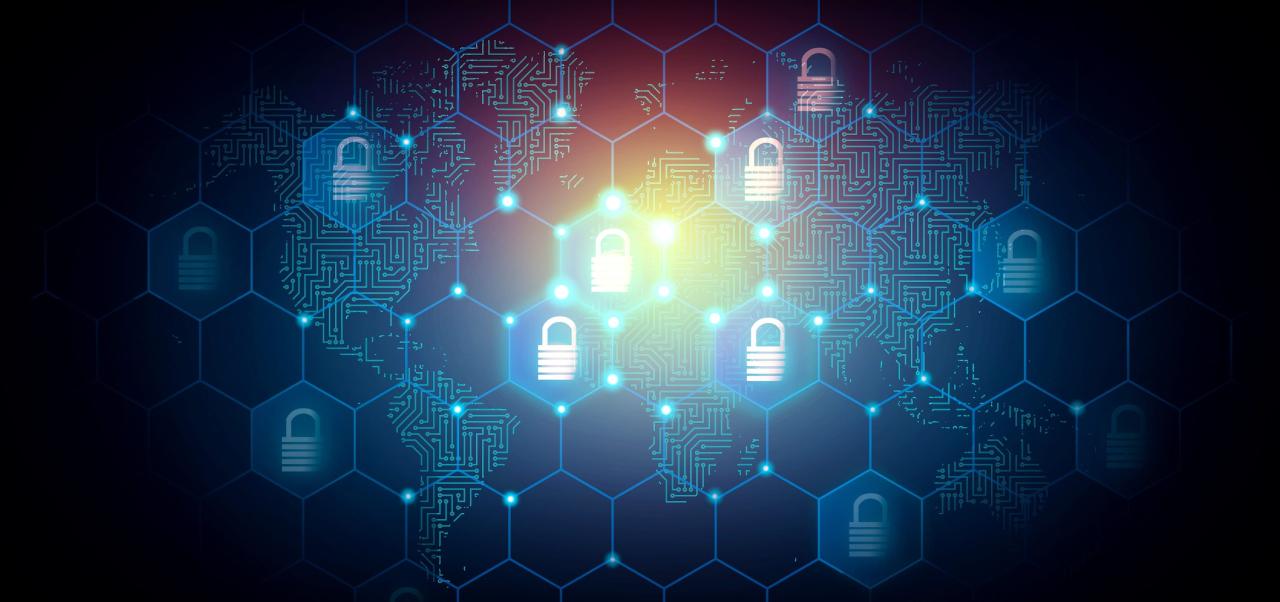In the rapidly evolving digital landscape, the role of cybersecurity has taken center stage in safeguarding businesses across the globe. As companies embrace digital transformation to improve operational efficiency, streamline communications, and enhance customer experiences, they also open new doors for cybercriminals. Cybersecurity is no longer just a technical necessity—it is a strategic imperative that underpins the trust and continuity of modern enterprises. This comprehensive article delves into the latest cybersecurity innovations, examines the ever-changing threat environment, and outlines best practices that organizations can adopt to defend their digital assets. By embracing advanced technologies and integrating robust security measures into every facet of their operations, companies can protect themselves from malicious attacks and ensure sustainable growth in an increasingly interconnected world.
The Evolving Cyber Threat Landscape
As technology advances, so do the methods and tools employed by cyber adversaries. Modern enterprises face a multitude of threats that are both sophisticated and relentless. The digital era has not only expanded the attack surface but also introduced complex challenges that demand a proactive and multi-layered security strategy.
Cyber threats come in many forms, and understanding their nuances is critical for developing effective defense mechanisms. Among the most prominent challenges are:
A. Phishing and Social Engineering Attacks
Phishing attacks remain a primary method for cybercriminals to exploit human vulnerabilities. These attacks involve deceptive communications that lure unsuspecting employees into divulging sensitive information. Social engineering, a broader category, manipulates human psychology to breach security defenses, often bypassing technological safeguards.
B. Ransomware Incidents
Ransomware has emerged as one of the most damaging threats to businesses worldwide. In these attacks, malicious software encrypts vital data, rendering it inaccessible until a ransom is paid. The financial impact, coupled with operational disruptions, makes ransomware a persistent menace.
C. Insider Threats
Not all threats come from external sources. Insider threats, whether intentional or accidental, pose significant risks. Employees or contractors with privileged access may inadvertently compromise data security, or worse, deliberately leak sensitive information for personal gain.
D. Distributed Denial of Service (DDoS) Attacks
DDoS attacks overwhelm networks with a flood of traffic, effectively paralyzing online services and business operations. These attacks can cripple an organization’s digital infrastructure, leading to substantial downtime and financial loss.
E. Advanced Persistent Threats (APTs)
APTs are prolonged and targeted cyber intrusions in which attackers infiltrate a network and remain undetected for extended periods. Their goal is often to exfiltrate sensitive data or spy on critical operations, making them particularly challenging to detect and eradicate.
F. Zero-Day Exploits
These exploits take advantage of previously unknown software vulnerabilities before developers have a chance to release patches. Zero-day attacks can have devastating consequences, as the lack of an immediate remedy leaves organizations exposed.
Emerging Technologies in Cyber Defense
To combat these ever-evolving threats, businesses are increasingly turning to innovative technologies that not only detect but also prevent cyberattacks in real time. The integration of cutting-edge tools has revolutionized the cybersecurity landscape, offering enterprises the ability to predict, identify, and neutralize threats swiftly.
A. Artificial Intelligence (AI) and Machine Learning (ML)
Artificial Intelligence and Machine Learning have become cornerstones of modern cybersecurity solutions. These technologies enable systems to analyze enormous volumes of data at unprecedented speeds, uncovering patterns that might indicate an impending threat. Key applications include:
- Threat Prediction: AI-driven platforms can forecast potential attack vectors by analyzing historical data and identifying anomalies.
- Automated Response: Machine Learning algorithms facilitate automated responses, reducing the window of vulnerability between detection and remediation.
- Reduced False Positives: By learning from past incidents, AI systems improve the accuracy of threat detection, minimizing the frequency of false alarms.
B. Blockchain Technology
Blockchain is transforming data security by providing a decentralized and immutable ledger. Its inherent characteristics offer a robust defense against tampering and unauthorized access. Benefits include:
- Enhanced Data Integrity: Blockchain’s distributed nature ensures that data cannot be easily altered without consensus from the network.
- Secure Transactions: The technology is particularly effective in securing financial transactions, providing transparency and traceability.
- Decentralized Access Control: By removing central points of failure, blockchain reduces the risk of data breaches and cyberattacks.
C. Zero Trust Architecture
The Zero Trust model has redefined traditional security paradigms by assuming that no user or device is trustworthy by default. This approach necessitates continuous verification at every stage of access. Its core components are:
- Multi-Factor Authentication (MFA): Strengthening access control by requiring multiple forms of verification.
- Continuous Monitoring: Constantly tracking user behavior to detect anomalies in real time.
- Micro-Segmentation: Dividing the network into smaller segments to contain potential breaches and limit lateral movement.
D. Cloud Security Innovations
As enterprises migrate to cloud environments, ensuring the security of cloud infrastructure becomes paramount. New cloud security measures include:
- Secure Access Service Edge (SASE): A convergence of network and security services, SASE delivers comprehensive protection for cloud-based applications and data.
- Cloud-Native Security Tools: These solutions leverage AI and automation to monitor cloud activity, identify vulnerabilities, and enforce security policies.
- Advanced Encryption: Both data in transit and data at rest benefit from state-of-the-art encryption protocols that thwart unauthorized access.
E. Internet of Things (IoT) Security
The proliferation of IoT devices has expanded the potential attack surface for cybercriminals. Securing these interconnected devices requires specialized strategies:
- Device Authentication: Ensuring that each IoT device is properly authenticated before it joins the network.
- Network Segmentation: Isolating IoT devices from critical systems to prevent breaches from spreading.
- Regular Firmware Updates: Keeping devices up to date with the latest security patches to mitigate vulnerabilities.
F. Advanced Endpoint Protection
In today’s mobile and remote work environments, endpoints such as laptops, smartphones, and tablets are prime targets. Advanced Endpoint Detection and Response (EDR) systems offer:
- Real-Time Monitoring: Constant surveillance of endpoint activities to detect and neutralize threats immediately.
- Incident Response Automation: Automated actions that isolate and remediate compromised endpoints.
- Threat Intelligence Integration: Leveraging global threat data to enhance endpoint security measures.
Best Practices for Enterprise Cybersecurity
While advanced technologies form the backbone of modern cybersecurity, the human element remains critical. Effective cybersecurity strategies combine technology with robust policies and a culture of security awareness. Enterprises should consider the following best practices:
A. Comprehensive Employee Training
Employees are the first line of defense against cyber threats. Regular training programs should be implemented to educate staff on recognizing phishing attempts, avoiding social engineering tactics, and adhering to security protocols. Essential elements include:
- Phishing Simulations: Conducting simulated phishing attacks to test and improve employee vigilance.
- Ongoing Education: Providing continuous learning opportunities on the latest cybersecurity trends and threats.
- Clear Communication: Establishing clear policies regarding data handling, password management, and incident reporting.
B. Regular Security Audits and Penetration Testing
Conducting periodic security assessments is crucial for identifying vulnerabilities before they can be exploited. Enterprises should engage in:
- Comprehensive Security Audits: Regular reviews of all systems, processes, and networks to identify potential security gaps.
- Penetration Testing: Simulating cyberattacks to test the resilience of existing security measures.
- Risk Assessments: Evaluating the potential impact of identified vulnerabilities and prioritizing remediation efforts.
C. Implementing Robust Access Controls
Effective access control mechanisms are fundamental to safeguarding sensitive data. Key strategies include:
- Least Privilege Principle: Ensuring that employees only have access to the data necessary for their roles.
- Role-Based Access Control (RBAC): Assigning permissions based on job functions and responsibilities.
- Regular Access Reviews: Periodically reviewing and adjusting access rights to reflect changes in personnel or roles.
D. Data Encryption and Secure Backup Solutions
Data encryption is a vital defense against unauthorized access. Enterprises should adopt comprehensive strategies that include:
- End-to-End Encryption: Securing data at every stage, from transmission to storage.
- Regular Backup Procedures: Implementing robust backup systems with offsite storage to ensure data availability in case of an incident.
- Disaster Recovery Planning: Establishing clear procedures for data restoration and business continuity following a breach.
E. Collaboration with Cybersecurity Experts
No enterprise can navigate the complex world of cybersecurity alone. Partnering with external experts can provide valuable insights and bolster internal defenses. Consider:
- Managed Security Service Providers (MSSPs): Outsourcing security operations to professionals who offer 24/7 monitoring and rapid incident response.
- Cyber Threat Intelligence Sharing: Collaborating with industry peers and government agencies to share information on emerging threats.
- Consultancy Services: Engaging cybersecurity consultants to review and enhance existing security strategies.
Integrating Cybersecurity into Business Culture
Technology and policies alone are not enough to secure an enterprise—cybersecurity must be woven into the fabric of organizational culture. A proactive approach to cybersecurity involves every member of the organization, from top executives to frontline employees.
A. Leadership Commitment
The success of any cybersecurity program begins at the top. Leaders must champion security initiatives and allocate the necessary resources to support them. This includes:
- Establishing a Security-First Mindset: Promoting a culture where cybersecurity is viewed as a critical component of business strategy.
- Allocating Budgets: Investing in state-of-the-art security tools, training programs, and expert consultations.
- Regular Communication: Keeping cybersecurity at the forefront of internal communications to reinforce its importance.
B. Cross-Department Collaboration
Cybersecurity is not solely the responsibility of the IT department. A collaborative approach that involves all areas of the organization can create a more resilient defense posture. Strategies include:
- Interdepartmental Training: Tailoring cybersecurity training sessions to the specific needs of different departments.
- Coordinated Incident Response: Developing unified protocols that ensure a swift, coordinated response in the event of a security breach.
- Feedback Mechanisms: Encouraging employees to report suspicious activities or potential vulnerabilities without fear of reprisal.
C. Continuous Improvement and Adaptation
The cybersecurity landscape is dynamic, and strategies must evolve accordingly. Organizations should adopt a mindset of continuous improvement by:
- Investing in Research and Development: Staying informed on the latest cybersecurity technologies and innovations.
- Monitoring Global Trends: Keeping abreast of emerging threats and adjusting defenses proactively.
- Learning from Incidents: Conducting thorough post-incident reviews to understand failures and improve future responses.
Future Trends in Cybersecurity
The future of cybersecurity promises to be both challenging and exciting. As technology continues to advance, new paradigms and innovations are set to reshape the landscape of digital defense.
A. Quantum-Resistant Cryptography
With the advent of quantum computing, traditional encryption methods may soon become obsolete. Researchers are developing quantum-resistant cryptographic algorithms to safeguard data against the immense processing power of quantum computers. This shift is expected to fundamentally alter how sensitive information is protected, ensuring that encryption remains robust in the face of emerging threats.
B. Enhanced Biometric Authentication
Biometric technologies such as fingerprint scanning, facial recognition, and iris detection are becoming increasingly sophisticated. These methods offer a higher level of security compared to traditional password-based systems. Future developments in biometrics may include:
- Multi-Modal Authentication: Combining several biometric indicators to create a layered and more reliable security system.
- Continuous Authentication: Using biometrics for ongoing verification throughout a user’s session, rather than a single point of entry.
- Integration with AI: Leveraging artificial intelligence to continuously refine and improve biometric authentication processes.
C. Autonomous Cyber Defense Systems
The integration of AI and ML into cybersecurity is leading to the development of autonomous defense systems capable of detecting and mitigating threats without human intervention. These systems offer the potential to:
- Predict Attacks: Utilize predictive analytics to identify potential vulnerabilities before they are exploited.
- Automate Responses: Implement immediate, automated countermeasures to neutralize threats as soon as they are detected.
- Learn and Adapt: Continuously improve by analyzing new data and adapting defense strategies in real time.
D. The Expansion of Security Operations Centers (SOCs)
Security Operations Centers are evolving into high-tech hubs that leverage cutting-edge tools to monitor, analyze, and respond to cyber threats around the clock. Future SOCs are expected to incorporate:
- Integrated Threat Intelligence: Consolidating data from multiple sources to provide a comprehensive view of the threat landscape.
- Advanced Visualization Tools: Utilizing data visualization to present complex threat information in an accessible format.
- Global Collaboration: Linking SOCs across geographical boundaries to facilitate the rapid sharing of critical security intelligence.
E. Regulatory and Compliance Trends
As cyber threats continue to escalate, governments and regulatory bodies are increasingly emphasizing the importance of robust cybersecurity measures. Future trends in regulation may include:
- Stricter Data Protection Laws: Enforcing higher standards for data security and privacy to protect consumers.
- Mandatory Incident Reporting: Requiring organizations to report cyber incidents promptly to improve transparency and accountability.
- Global Cybersecurity Standards: Developing international standards that ensure a consistent and effective approach to cybersecurity across borders.
The Business Impact of Cybersecurity
Beyond protecting sensitive information, robust cybersecurity strategies have a profound impact on the overall success and sustainability of modern enterprises. The benefits of investing in advanced cybersecurity measures include:
A. Enhanced Customer Trust
Customers are more likely to engage with businesses that prioritize the security of their data. Demonstrating a commitment to cybersecurity fosters trust and loyalty, which can translate into increased revenue and market share.
B. Operational Continuity
Cyberattacks can severely disrupt business operations, leading to downtime and lost productivity. Proactive cybersecurity measures help ensure that systems remain operational even during an attack, thereby safeguarding business continuity.
C. Regulatory Compliance
In an era of stringent data protection regulations, maintaining robust cybersecurity practices is not only a best practice but a legal necessity. Compliance with regulatory requirements mitigates the risk of fines and legal repercussions, protecting the company’s financial and reputational well-being.
D. Competitive Advantage
Organizations that invest in cybersecurity not only protect themselves but also position themselves as industry leaders in security innovation. This competitive advantage can be leveraged in marketing efforts, showcasing the enterprise as a safe and reliable partner in business.
E. Cost Savings in the Long Run
While initial investments in cybersecurity may be significant, the long-term savings from avoiding costly breaches and operational disruptions far outweigh the expense. A robust security posture minimizes the financial impact of potential cyber incidents.
Integrating Cybersecurity into Strategic Planning
For modern enterprises, cybersecurity must be integrated into every level of strategic planning. It is not simply an IT issue but a core component of overall business strategy. Key considerations for integrating cybersecurity into strategic planning include:
A. Board-Level Engagement
Ensuring that the board of directors is well-informed about the risks and strategies associated with cybersecurity is crucial. This engagement ensures that cybersecurity receives the attention and resources necessary to be effective.
B. Risk Management Frameworks
Developing and implementing comprehensive risk management frameworks allows businesses to identify, assess, and mitigate cyber risks. These frameworks provide a structured approach to understanding the potential impact of cyber threats and formulating effective countermeasures.
C. Investment in Innovation
Allocating resources to research and development in cybersecurity can drive innovation within the organization. By staying ahead of technological trends, enterprises can adopt solutions that not only protect them but also provide a strategic edge in a competitive market.
D. Cross-Functional Collaboration
Cybersecurity strategies should involve stakeholders from all departments, ensuring that every facet of the business is aligned with the overall security goals. This collaborative approach fosters a culture of security awareness and enhances the organization’s ability to respond to threats effectively.
Case Studies and Real-World Applications
To illustrate the tangible benefits of advanced cybersecurity strategies, it is helpful to examine real-world case studies of organizations that have successfully integrated these innovations into their operations.
A. Financial Institutions
Banks and financial institutions are prime targets for cyberattacks due to the sensitive nature of the data they manage. Many leading banks have implemented AI-driven threat detection systems and blockchain-based transaction monitoring to secure their operations. These measures have resulted in a significant reduction in fraud incidents and have bolstered customer confidence in digital banking services.
B. Healthcare Providers
The healthcare industry faces unique challenges in protecting patient data. By adopting robust encryption methods, continuous monitoring, and strict access controls, healthcare providers have been able to safeguard medical records against ransomware attacks and data breaches. The integration of biometric authentication has further enhanced the security of patient information.
C. Retail and E-commerce
With the rise of online shopping, retail companies have become increasingly vulnerable to cyber threats. Implementing comprehensive cloud security solutions and secure payment gateways has allowed leading retailers to protect customer transactions and sensitive information. These initiatives have not only reduced the incidence of cybercrime but also improved overall customer satisfaction and trust.
Conclusion
Cybersecurity is a dynamic and multifaceted field that is critical to the survival and success of modern enterprises. As cyber threats continue to evolve, organizations must embrace innovative technologies and integrate robust security practices into every aspect of their operations. From AI-driven threat detection to blockchain-enhanced data integrity, the tools available today offer unprecedented capabilities for defending against even the most sophisticated attacks.
For enterprises looking to thrive in the digital age, investing in cybersecurity is not optional—it is essential. By fostering a culture of security, engaging in continuous learning, and collaborating with experts, businesses can build a resilient digital infrastructure that not only safeguards sensitive data but also drives long-term growth and customer trust. The future of cybersecurity is both challenging and promising, and those who adapt to its demands will be well-positioned to lead in an increasingly digital world.











